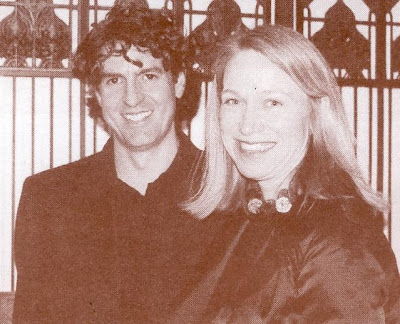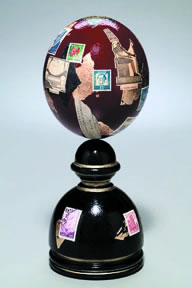
Martha Graham to Agnes De Mille in a private letter:
There is a vitality, a life force, a quickening
that is translated through you into action, and because there is only one of you in all time, this expression is unique.
If you block it - it will never exist through any other medium and be lost.
The world will not have it.
It is not your business to determine how good it is; nor how valuable it is; nor how it compares to other expressions.
It is your business to keep it yours, clearly and directly, to keep the channel open.
You do not even have to believe in yourself or your work.
You have to keep open.
You do not even have to believe in yourself or your work.
You have to keep open and aware directly to the urges that motivate you.
Keep the channel open.
NO artist is pleased. There is no satisfaction whatever at any time.
There is only a queer, divine dissatisfaction; a blessed unrest that keeps us marching and makes us more alive than the others…
From the New York Times:
Julie Thoma Wright, a founder and co-owner of Wright, the Chicago auction house that helped create the market for 20th-century modern design, died on Monday in Chicago. She was 49.
The cause was colorectal cancer, her husband, Richard Wright, said.
Ms. Thoma Wright, an interior designer, founded Wright in Chicago in 2000 with Mr. Wright, who was at the time a private dealer in collectible 20th-century postwar design. Ms. Thoma Wright’s vision for promoting the still-nascent field at auction contrasted with and eventually helped transform the traditionally dry approach at the large international houses like Phillips de Pury, Christie’s and Sotheby’s.
“She basically brought the concept of auctions into the 21st century,” James Zemaitis, director of 20th century design at Sotheby’s in New York, said of Ms. Thoma Wright. “From the first, the catalogues looked like fashion or lifestyle magazines..”
Auction prices for modern design now keep pace with prices for contemporary art. Ms. Thoma Wright was something of a design object herself, dressed in vintage Chanel or Hermès.
Julie Christianne Thoma was born Feb. 25, 1958, in Le Mars, Iowa, one of eight children. After graduating from Iowa State University with a degree in interior design, she moved to Chicago, starting a design firm, Julie Thoma Inc., in 1985. She met Mr. Wright in 1992; they were married in 1995. Returning to residential design that year, she started a new firm, Thoma Wright Ltd.
Her marriage to Joseph Pagoria ended in divorce. She is survived by her husband, Mr. Wright; a son, Nicholas, from her first marriage; her sons with Mr. Wright, Emerson and Adler; her mother, Gladys Thoma; her sisters, Gloria Ohlendorf, Barbara Espeland, Janet Higgins, Nancy Groetken, Glenda Lockard and Kelli Thoma; and her brother, Roger Thoma.
End New York Times
-------------------------------------------------------------------------------------------
I met Julie only a few times but the character and beauty of her discourse were consistent and simply extraordinary. The first time I met her was in the fall of 2002 during the third week of my tenure as director of Unity Temple Restoration Foundation. The separate, congregation had full control of some furniture and an important vase that had been sold well under market value by another auction house (than Wright). It was controversial and created a conflict and led to considerable bad press for the Restoration Foundation including a full page 3 article in the Washington Post. The historic preservation community was ‘up in arms’.
I didn’t know about it, but a former employee had authorized Julie to do photography of a Frank Lloyd Wright barrel chair on the east terrace of Unity Temple for a sale. This was a conflict with the idea of historic preservation we were trying to brand.
When I arrived at work I met the photo crew on the east terrace – the light was beautiful and the objects were perfectly lit and I thought, “Dear lord this is a conflict with what we are trying to do…”
I asked who was in charge and was referred to a leggy blond in Prada. Her fashion was subtle and present – a cream blouse, black pants and chunky shoes - like your best girlfriend from high school with some fabulous couture sponsorship. A turquoise necklace and just frank simple beauty.
I said, “We need to talk.” And we sat down on the steps. And here’s the extraordinary part and this is consistent with all my dealings with Julie and Richard; she said, “Oh my god – I understand this COMPLETELY.” Her ethical base and Wright's idea is about truth and beauty.
They spent serious money on setting this photo shoot up and she had the right to do it and she just just cut it off. She whispered to the handlers and they loaded up and left.
And I felt it so deeply. It was a tough time for me and after they had packed up I went to a corner of that masterpiece church and I really thought about her kindness – and her ethical approach to her work.
The next time I heard from Wright20 was a sort of safety check and they wanted to help with the restoration. They had sent some good money and it was my first check. It underwrote a tour of Seymour Persky’s collection so it was money that grew. The photo at the top is Julie and Richard in a common, happy pause.
I had just asked Julie if Richard was happy with the event and she walked across the room and put her head on his shoulder. I asked her to stop ‘necking’ and she turned around.
----------------------------------------------------------------------------------------------
Postscript: I published this entry and I received an email within 20 minutes from a collector
saying that he is heartbroken and he asks the question about fairness and I say that we all share that grief and that question.





